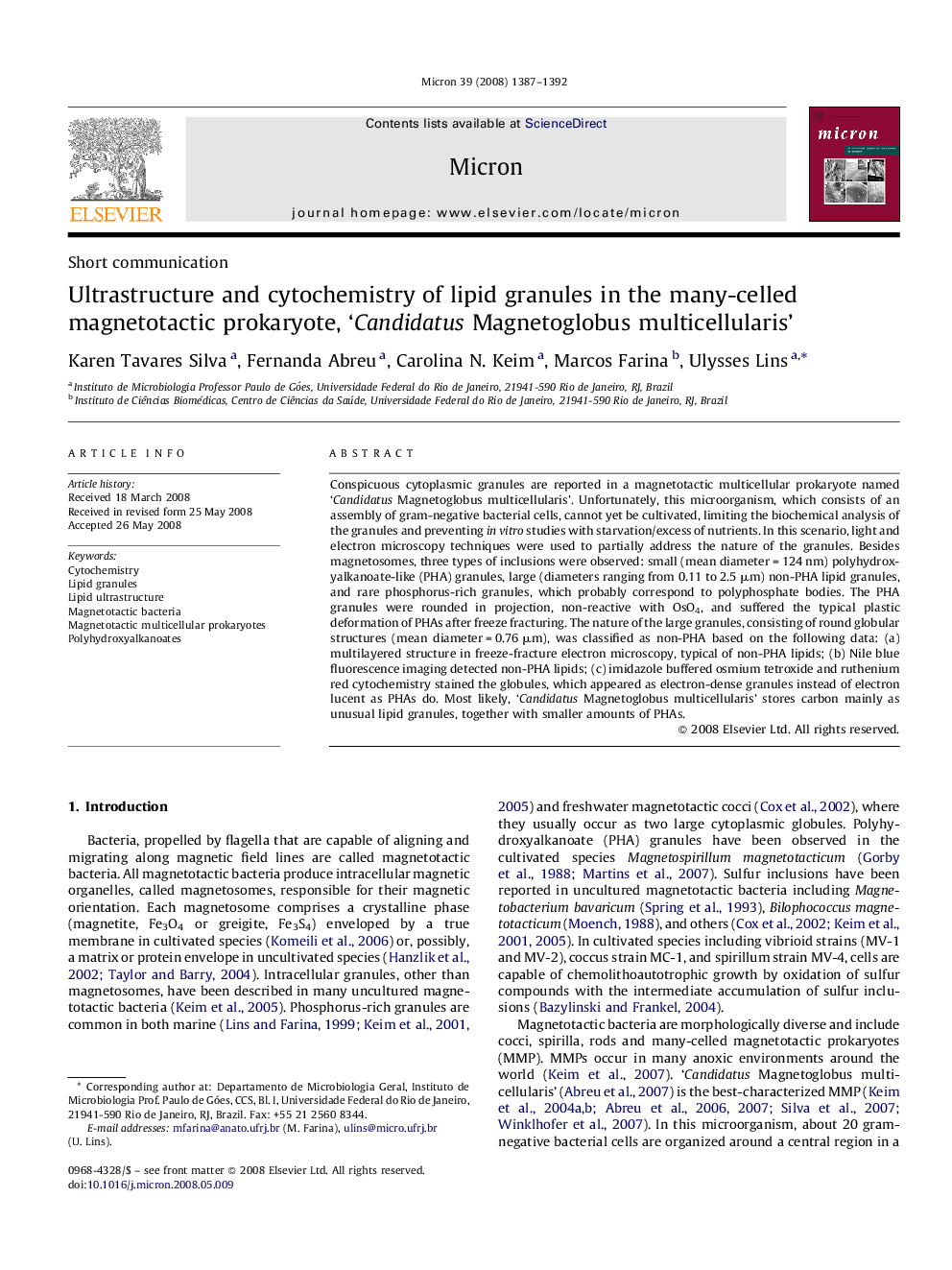| Article ID | Journal | Published Year | Pages | File Type |
|---|---|---|---|---|
| 1589717 | Micron | 2008 | 6 Pages |
Conspicuous cytoplasmic granules are reported in a magnetotactic multicellular prokaryote named ‘Candidatus Magnetoglobus multicellularis’. Unfortunately, this microorganism, which consists of an assembly of gram-negative bacterial cells, cannot yet be cultivated, limiting the biochemical analysis of the granules and preventing in vitro studies with starvation/excess of nutrients. In this scenario, light and electron microscopy techniques were used to partially address the nature of the granules. Besides magnetosomes, three types of inclusions were observed: small (mean diameter = 124 nm) polyhydroxyalkanoate-like (PHA) granules, large (diameters ranging from 0.11 to 2.5 μm) non-PHA lipid granules, and rare phosphorus-rich granules, which probably correspond to polyphosphate bodies. The PHA granules were rounded in projection, non-reactive with OsO4, and suffered the typical plastic deformation of PHAs after freeze fracturing. The nature of the large granules, consisting of round globular structures (mean diameter = 0.76 μm), was classified as non-PHA based on the following data: (a) multilayered structure in freeze-fracture electron microscopy, typical of non-PHA lipids; (b) Nile blue fluorescence imaging detected non-PHA lipids; (c) imidazole buffered osmium tetroxide and ruthenium red cytochemistry stained the globules, which appeared as electron-dense granules instead of electron lucent as PHAs do. Most likely, ‘Candidatus Magnetoglobus multicellularis’ stores carbon mainly as unusual lipid granules, together with smaller amounts of PHAs.
